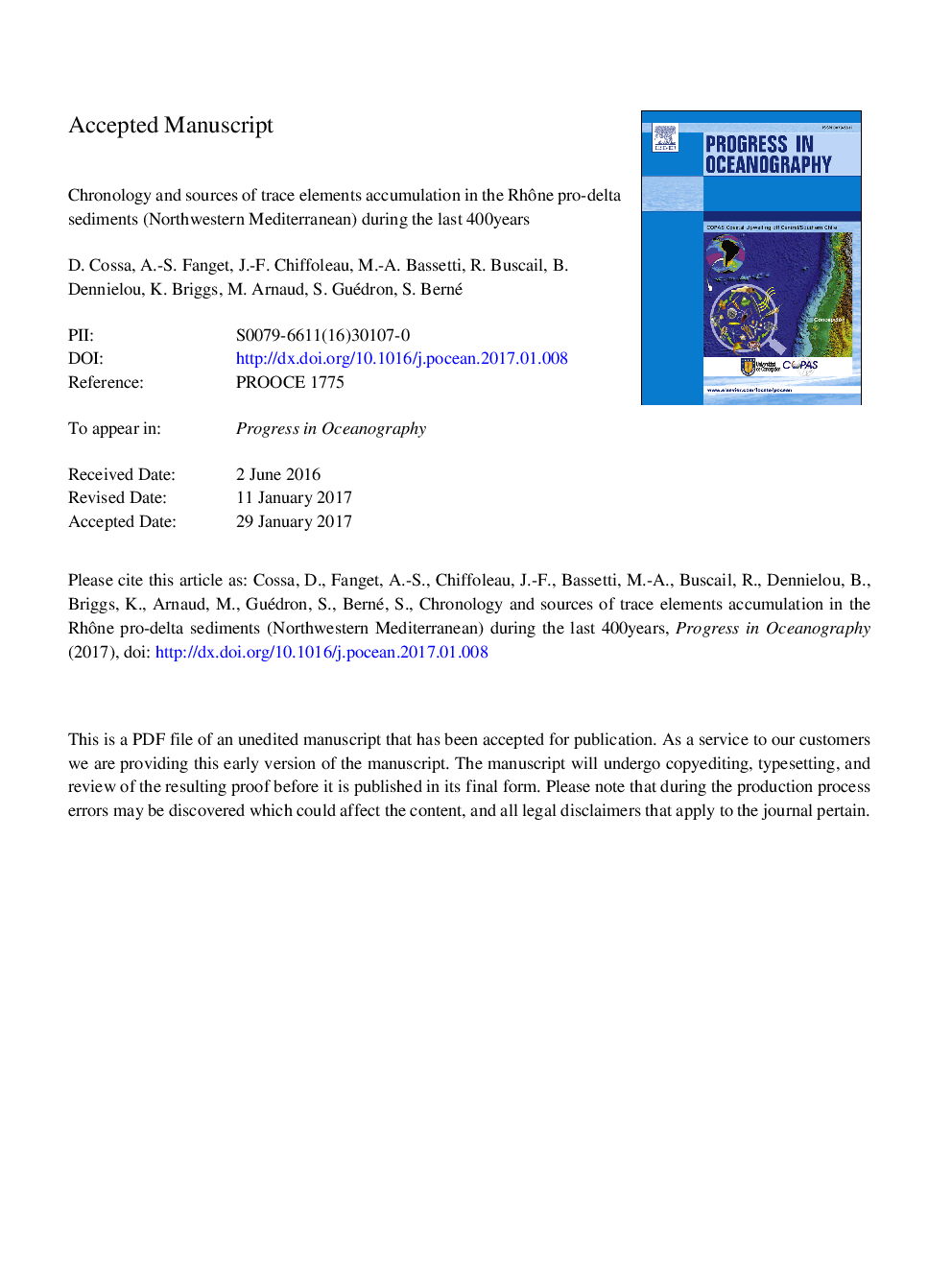| کد مقاله | کد نشریه | سال انتشار | مقاله انگلیسی | نسخه تمام متن |
|---|---|---|---|---|
| 8886668 | 1627895 | 2018 | 41 صفحه PDF | دانلود رایگان |
عنوان انگلیسی مقاله ISI
Chronology and sources of trace elements accumulation in the Rhône pro-delta sediments (Northwestern Mediterranean) during the last 400 years
دانلود مقاله + سفارش ترجمه
دانلود مقاله ISI انگلیسی
رایگان برای ایرانیان
موضوعات مرتبط
مهندسی و علوم پایه
علوم زمین و سیارات
زمین شناسی
پیش نمایش صفحه اول مقاله

چکیده انگلیسی
The Rhône pro-delta sediments receive the particulate inputs from the Rhône River, the largest freshwater discharge of the Western Mediterranean Sea. Trace element (TEs: Ag, Cd, Co, Cr, Cu, Ni, Pb, and Zn) concentrations and stable Pb isotope ratios were determined along a 7.7-m-long sediment core collected from the Rhône prodeltaic lobe, archiving the deposits of the last 400 years. Trace element mean concentrations during the pre-industrialized era (before 1850 CE) were no different from the average composition of Earth's upper crust, except for Cr. Principal component analysis, performed on TEs and tracers, suggests three origins for TEs that we identified as (i) marine biogenic material (Ag, Cd), (ii) ultramafic rocks (Li, Cr, Ni), and (iii) other clay minerals (Co, Cu, Pb and Zn). During the pre-industrial period, several changes in the TE/Al ratios coincided with flood events or/and modifications in the channelization of the Rhône River mouth. Some frequencies in the TEs temporal variations allow us to hypothesize some influence of climate variation. Sediments deposited after 1850 CE exhibited concentrations of certain TEs exceeding 1.3-3.5 times the concentrations of the pre-industrial era (Ag > Cd-Pb > Cu-Zn). Principal component analysis, performed on post-1850 CE data, allows to distinguish pristine and “anthropogenically impacted” TEs. Pristine TEs, such as Co, Cr, and Ni, are linked with clay markers (Al, Li and Fe), Co and Ni are associated with Mn-enrichment, whereas Cr is correlated with Fe. “Anthropogenically impacted” elements consist of Ag, Cd, Cu, Pb, and Zn. Vertical profiles show that TE contamination has increased dramatically after the IInd World War and reached a maximum between 1970 and 1980, consistently with anthropogenic atmospheric emissions changes. Sediment deposited on the Rhône prodelta at the beginning of XVIIth Century have 206/207Pb ratios close to values of natural Pb (1.200), whereas sediments deposited after 1850 CE are clearly contaminated by European gasoline and industrial Pb pools (<1.180). In addition, peak-events can be related to flooding periods, natural and man-induced channelization of the Rhône River mouth, or diagenetic processes.
ناشر
Database: Elsevier - ScienceDirect (ساینس دایرکت)
Journal: Progress in Oceanography - Volume 163, April 2018, Pages 161-171
Journal: Progress in Oceanography - Volume 163, April 2018, Pages 161-171
نویسندگان
D. Cossa, A.-S. Fanget, J.-F. Chiffoleau, M.-A. Bassetti, R. Buscail, B. Dennielou, K. Briggs, M. Arnaud, S. Guédron, S. Berné,